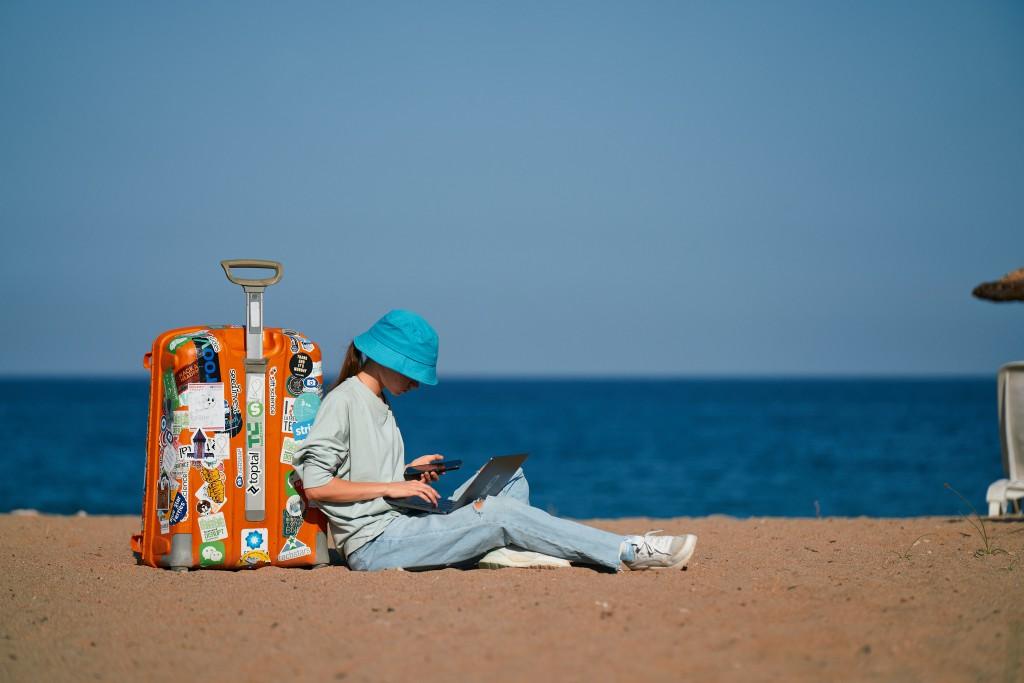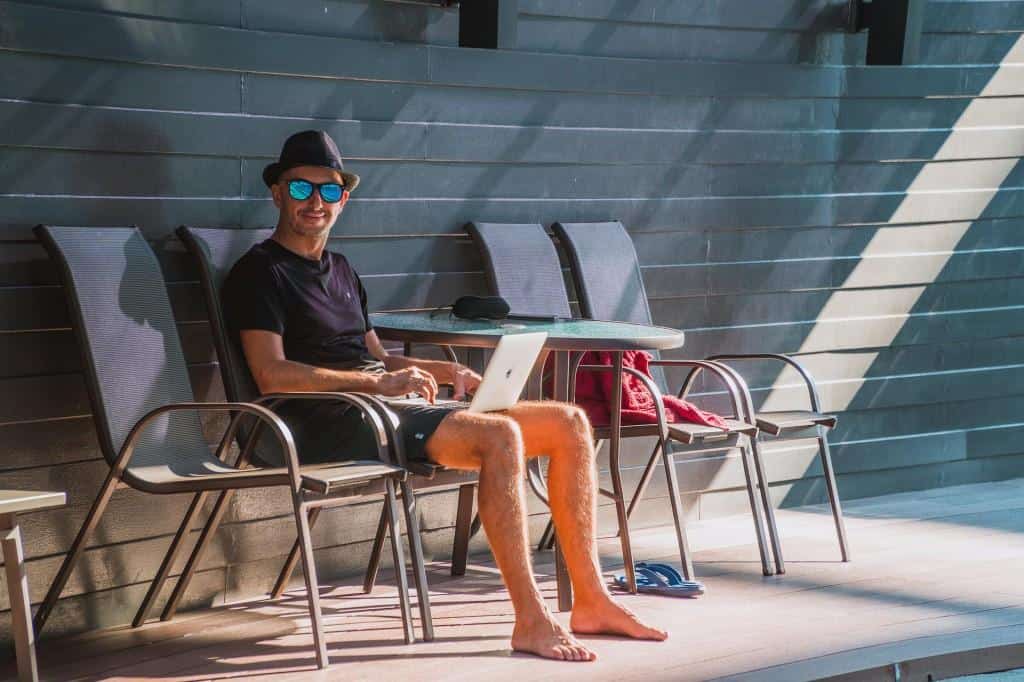Workers are getting more juice from the squeeze by combining work and holiday trips.
Read more for how people are blurring the lines between professional life and play-time.
What is blended travel for?
Blended travel is a mix of business and leisure travel.
Bleisure travellers combine private and professional time by adding personal days to a business trip. According to 2021’s Global Business Traveler Report, 89% of business travellers plan to pad work trips with personal days.
Digital nomads come for the conference and stick around to make the destination their workspace: Airbnb reports over 100,000 stays of over 90 days in the past year.
Workcationers go the opposite way, cramming emails and video calls in between excursions.
Employees now living far away from the office may take a few extra days for a city break after quarterly face-to-face meetings. (The internet hasn’t settled on an awkward word for this type of traveller yet)

Why are workers blending travel?
Pressure to work remotely is changing the butt-in-seat business model. Employers eager for well-attended in-person meetings are starting to sweeten the pot by locating them in interesting destinations. People are considering climate impact in travel decisions.
Where are blended travellers going for extended stays?
Warmth and a lower cost of living seem to be major motivators. A TNMT Google Trends analysis reports a +1000% increase in Google searches for Portugal, Spain, Mexico, Costa Rica in the past year. Skyscanner shows that Thailand is trending. 41% of 2022’s flight bookings to the country spanned more than 15 days.

What are the needs of blended travellers?
The needs vary as much as the type of travel, but it all starts with infrastructure and services that support the professional needs of workers. This could include a business centre at a hotel, access to a coworking space, or bandwidth robust enough to seamlessly handle Mum’s conference call and the kids’ streaming games at the same time.
Workers and employers have to consider security and equipment support.
Travel insurance companies need to factor in greater allowances for lost luggage and equipment, pet care, liability, vacation or vehicle rental and more. Blended travellers need tailored, modular insurance that reflects their leisure and work lifestyles.
Neither fish nor fowl?
Can holidaymakers truly leave the office behind? Can workers completely relax on the beach? Depends on the traveller. But one thing is clear: the idea of blended travel isn’t going anywhere.
AirHelp | Why airlines passengers are missing out on rightful compensation









